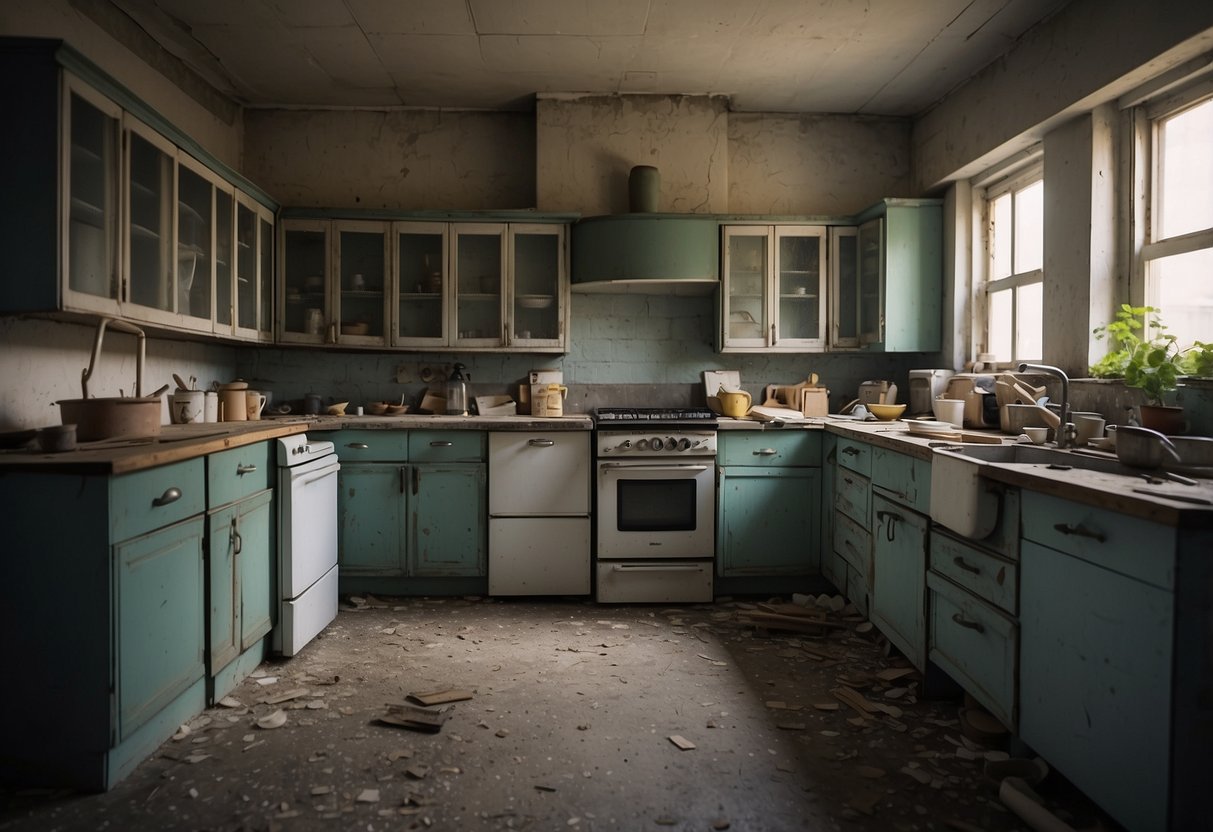How to Renovate Your Kitchen on a Budget: Expert DIY Tips and Cost-Saving Ideas
Painting and Walls

Paint and wallpaper can drastically change the look of a kitchen without a major investment. Proper preparation and technique are crucial to achieve a polished finish and ensuring long-lasting results.
Selecting the Right Paint
Choosing the right type of paint matters. Kitchens face humidity and heat, so it’s essential to select a water-resistant, washable paint. Semi-gloss and satin finishes are ideal for kitchen walls as they are more durable and easier to clean.
Color selection is equally important. Light colors like white walls can make the space feel larger and more open. Darker colors can add warmth, but they might make the space feel smaller. Consider the kitchen’s existing colors and lighting when choosing paint to ensure a cohesive look.
Prepping and Painting Techniques
Preparation is key to a successful painting job. Begin by cleaning the walls thoroughly to remove grease, dirt, and grime. Fill any holes or cracks with a suitable filler and sand them down for a smooth surface. Painter’s tape can be used to protect edges and ensure clean lines.
When painting, start with a primer to ensure better paint adhesion, even coverage, and longer-lasting results. Apply paint in thin, even coats using either a roller for large areas or a brush for edges and corners. Allow each coat to dry fully before applying the next to avoid unevenness.
For those considering wallpaper, the simplicity of peel-and-stick options can save time and make changes easier. Make sure the walls are smooth and clean before applying wallpaper to prevent bubbles and ensure a smooth finish.
Enhancing Lighting on a Budget
Transforming your kitchen lighting can make a huge difference without breaking the bank. By taking advantage of natural light and selecting budget-friendly light fixtures, you can enhance the ambiance and functionality of the space.
Maximizing Natural Light
Natural light is an excellent way to brighten up the kitchen while saving on electricity costs. Start by evaluating the windows and ensuring they are clean and free from obstructions. Consider using sheer curtains or blinds that can be easily opened during the day.
Strategically placing mirrors can also amplify the effect of natural light. Position mirrors on walls opposite windows to reflect sunlight deeper into the room. Another way to maximize natural light is by painting the walls in lighter colors. Light shades help reflect daylight and create a more spacious feel.
If privacy is not a concern, removing heavy window dressings or choosing frosted glass can also increase the amount of light that enters the room. Simple changes in window treatments and decor can significantly improve natural lighting.
Choosing Economical Light Fixtures
When artificial lighting is necessary, selecting economical light fixtures can greatly reduce costs. LED bulbs are more energy-efficient and have a longer lifespan compared to traditional incandescent bulbs. They come in various color temperatures to suit the desired ambiance of the kitchen.
Pendant lights are a stylish and cost-effective option for task lighting above kitchen islands or dining areas. Additionally, under-cabinet lighting is an affordable way to illuminate countertops, making food preparation safer and easier.
Consider visiting thrift stores or online marketplaces for second-hand fixtures that can be refurbished with a fresh coat of paint. Simple and affordable updates to light fixtures can greatly enhance the overall look and functionality of the kitchen without overspending.



